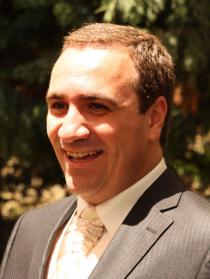
Pedro V Estrela
Title:
Clock Synchronization for the Low-latency Financial sectors
Abstract:
The modern regulated Financial sector requires clock synchronization to meet several Risk, Performance and Regulatory criteria.
Private market-makers have obligations to provide continuous Prices to the markets; they require the fastest technologies to avoid the risk of having stale prices to the markets. Public exchanges continuously match the received Orders, centrally, first by best price and then by best time; they require the same technologies to ensure a transparent, fair and deterministic service. All parties are fully regulated; among the rules, all steps of the Financial Trades must be reported with accurate timestamps.
This keynote will cover the latest clock synchronization Best Practices taken from these cutting-edge environments, for both viewpoints (Exchanges / Market-Makers). It will be detailed how electronic markets work, why specific technologies are faster, and how GPS+PTP+WR are used to monitor and optimize all of the above. The latest robustness improvements that avoid the well-known PTP single-point-of-failure and leap second issues will be covered - and why these additional features are essential to comply with the latest accuracy regulations, which have no provisions for outliers (MIFID-II RTS 25).
By focusing on this highly competitive industry, the speaker will make a case why other large distributed industries will essentially find the same problems of PTPv2, when inevitably they pursue an higher-accuracy path.
Helmut Imlau
Title:
Highly Accurate Time Dissemination and Network Synchronization
Abstract:
This talk analyzes methods of time dissemination in hierarchical synchronization networks and provides a mapping between the dissemination method and the network level. The need for time dissemination for the coherent network primary reference time clock (cnPRTC) architecture according to ITU-T G.8275 is explained. The following three methods will be discussed: Optical Time Transfer (e. g. according to ELSTAB), the IEEE 1588 High Accuracy Profile (“White Rabbit”), and the ITU-T specified PTP solution with full timing support from the network (PTP-FTS).


Kevin Stanton
Title:
We’re Synchronized—Now Compute!
Abstract:
For decades, computer timekeeping and time synchronization protocols have progressed along their own timelines with a major enhancements in one driving advancement in the other. These lines of progression have reached a point where we can begin to see a future where Distributed, Time-Coordinated Software can itself rely on Time-Synchronization that is as secure, as robust, and more accurate than the best-case latency of today’s data networking technologies. In this talk we discuss the history of computer timekeeping that led us to this point, important leaps forward in capabilities (and jumps backward), and characteristics of a future state that will democratize new programming paradigms that will both leverage today’s time synchronization technologies, and push them further to deliver more.

